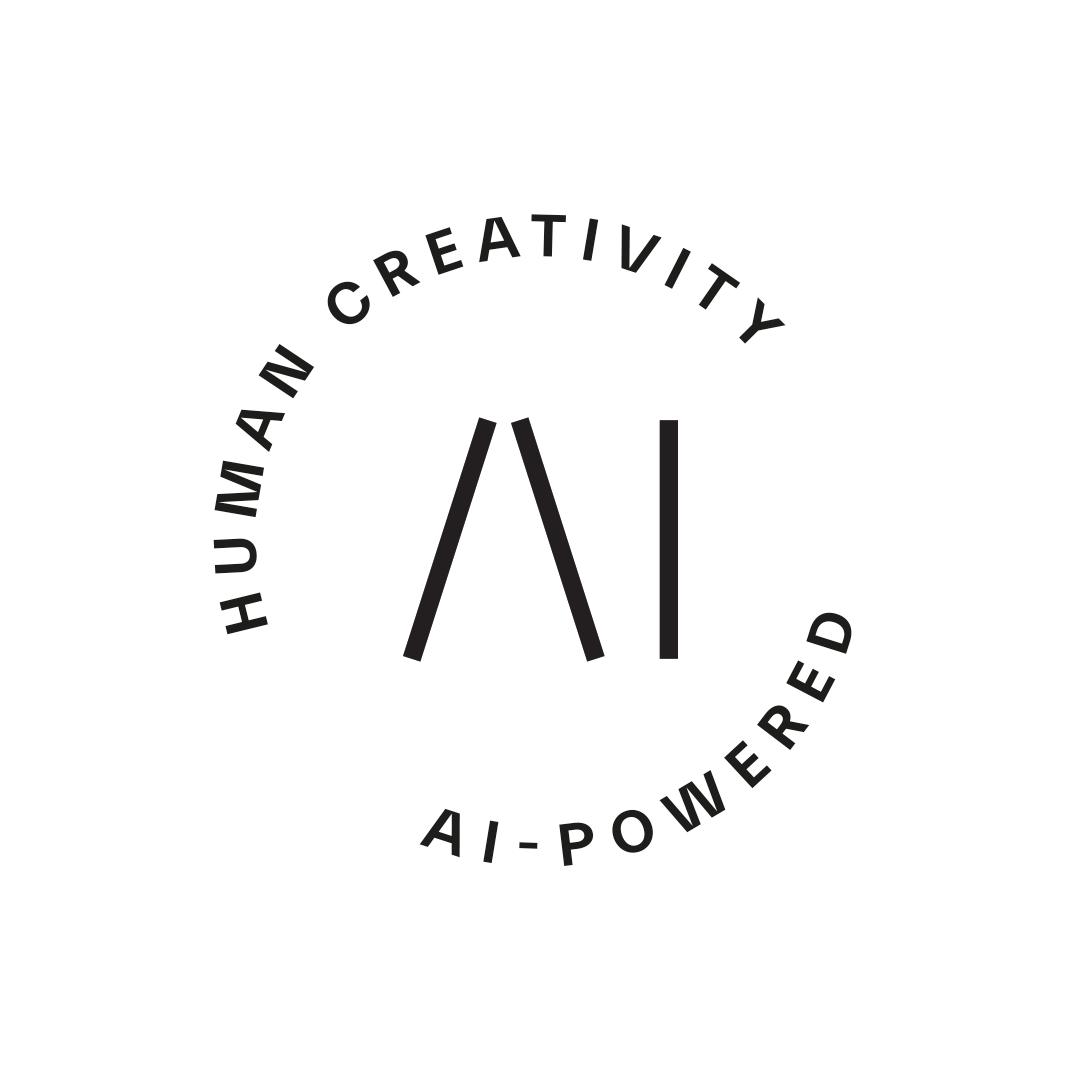How to give character to a machine? Can service be proactive, not just responsive? And, finally, what does it mean to design a truly reciprocal relationship between a human and a machine? At a recent SDN workshop by Siili’s Petri Lattu and Caroline Liu, we introduced the AI Agent Design Canvas, a toolkit aimed at helping designers and businesses conceptualize and build empathetic AI personalities.
The event sparked conversations about the role of AI in future interactions, prompting questions like: How do we embed empathy into technology? What should be the ethical safeguards? How to balance user agency? And, finally: How to create meaningful and trustworthy human-machine interactions?
This article is a recap of a follow-up interview with Petri and Caroline, offering a closer look at the concept of empathic machines.

GenAI and the shift in design
Traditionally, design has been human-centered—focused on understanding and meeting the needs of people. GenAI is challenging the default approach today, as the new systems don’t just react to human comments - they are becoming proactively participants in the ecosystem.
Petri Lattu: “If we believe that, at some point, interactions within companies will become agentic, both internally and externally, then companies need to start designing these things with deep thought.”
The age of reactive systems is over. Tomorrow’s businesses won’t just use AI to automate; they’ll use it to collaborate—with AI entities capable of forming real connections. Companies ignoring this shift risk irrelevance if we believe that efficiency always stems from the most efficient model.
Machines powered by GenAI are evolving into entities that simulate human empathy, make proactive decisions, and participate in emotional exchanges. This evolution requires us to rethink the very foundations of design.
Today, companies could operate through GenAI agents that represent their values, manage customer relationships, and even collaborate with employees. Designing for this future is no longer optional—it’s imperative. As Petri explains, this work is about “creating a consistent emotional and intellectual interface for your brand,” whether through nuanced, AI-enhanced customer service, agentic internal tools, or artificial customers that mimic your real ones.
Empathic machines are then a shift in both how technology is built and designed—from reactive to proactive, from human-centered to human-machine co-design. AI then becomes not just a tool but a partner—with synthetic entities capable of proactively influencing interactions, solving complex problems, and embodying the values of the companies they represent.
Petri Lattu: “Imagine a company as a GenAI agent—capable of conveying emotions and forming deep connections with users. This isn’t just about automation; it’s about creating a consistent emotional and intellectual interface for your brand.”
Empathy in AI
Can machines truly be empathetic? Surely not, but they can simulate empathy just as people do. in In the workshop, Caroline and Petri put focus on designing the interaction that introduces an element of emotional engagement with the end user.
By simulating empathy, machines can create experiences that feel more personal to the users, reducing the emotional distance between humans and technology. This has profound implications for how businesses design customer interactions, internal tools, and even organizational cultures.
Petri Lattu: “This isn’t just about making AI respond better; it’s about creating systems that can proactively influence interactions and add value in deeply human ways.”
The idea of proactive empathy sets empathic machines apart from traditional AI systems. Instead of simply reacting to user input, these systems can anticipate needs, offer personalized recommendations, and even adjust their behavior based on emotional cues.
Designing simulated empathy?
One of the key takeaways from Siili’s SDN workshop was the importance of intentionality in designing empathy. Empathy doesn’t emerge accidentally in AI -- it must be crafted through thoughtful interaction design and robust training data. As Caroline explains:
Caroline Liu: “When you’re designing for an AI system, you need a clear personality and a framework for how it will react in different scenarios. It’s like building a persona for a human user, but reversed—how the machine interprets and responds to the human.”
This approach requires designers to move beyond traditional user-centric design and consider the needs of the machine itself. What kind of data does the system need to simulate empathy effectively? How can its personality align with the brand it represents? And how do we ensure it operates ethically, respecting the boundaries of emotional manipulation? Petri and Caroline acknowledged these challenges, emphasizing the need for transparency and user control in empathic machine design.
Petri Lattu: “It’s essential to frame this work within ethical guidelines. Transparency and control for human users must be at the core of any interaction design for empathic machines.”
This commitment to ethics is embedded in Siili’s AI Agent Design Canvas, which includes considerations for user empowerment, data privacy, and emotional integrity. As organizations adopt these systems, maintaining trust will be paramount.
Balancing innovation and trust
While the canvas offers a bold vision for the future, it doesn’t ignore the challenges. Both Petri and Caroline emphasized the importance of balancing innovation with trust. The canvas integrates ethical safeguards to prevent manipulation and ensure user empowerment, such as:
- Transparency in how the AI operates and learns,
- Options for users to opt out of AI-driven interactions,
- Clear boundaries to avoid overstepping emotional manipulation.
The AI Agent Design Canvas is a tool for designers, but it’s also a call to action for organizations to rethink how they approach human-machine relationships. What if a company’s AI agent became more trusted than its human employees or leadership systems? What happens when machines represent our values better than we do? By embedding empathy and ethical considerations into the design process, we aim to set a new standard for AI-driven interactions.

Siili's AI Agent Design Canvas
Ethical considerations
As with any new technology, the adoption of empathic machines comes with a set of ethical challenges. These systems, designed to simulate human empathy, have the potential to create deeply personal and persuasive interactions. While this opens doors to unprecedented value creation, it also necessitates careful thought about the boundaries of ethical design. Petri and Caroline stressed that these challenges — transparency, accountability, and alignment with human values — can be mitigated through the principles embedded in their proposed AI Agent Design Canvas.
Petri Lattu: “It’s essential to frame this work within ethical guidelines. Transparency and control for human users must be at the core of any interaction design for empathic machines.”
At its core, the ethical challenge of empathic machines lies in their ability to manipulate emotions. By simulating empathy, AI systems can build trust, encourage engagement, and even influence decision-making. But where does this cross the line from beneficial to exploitative?
Caroline Liu: “When you define how a machine reacts, it’s critical to align its personality intention and behavior with user expectations and ethical boundaries. The proactiveness bring in by the empathy should enhance trust, not undermine it.”
For businesses adopting empathic machines, ethical design is more than a safeguard—it’s a competitive advantage. Trust is a cornerstone of user engagement, and companies that prioritize transparency and accountability will stand out in a crowded market. “Empathy should be a tool for connection, not control. Businesses that use it responsibly will build stronger, more lasting relationships with their users. Image an intelligent system could guide user to off-board with the system when user’s goal has achieved” says Caroline Liu.
Designers and businesses must then consider:
- How to ensure transparency: Build transparency into AI interactions by clearly communicating that users are engaging with a machine, not a human. Combine this with informed consent mechanisms, giving users control to opt in or out of AI-driven experiences while maintaining trust.
- Empathy without manipulation: AI should simulate empathy responsibly and not exploit emotions for business or engagement goals. E.g. Design AI to clearly state that it simulates empathy rather than experiencing real emotions.
- User control & agency: Ensure users can opt out or modify AI-driven interactions to prevent overreach.
- How to maintain data integrity: Protect the data used to train AI personas by enforcing robust data privacy measures. This includes ensuring that all data is secure, anonymized where necessary, and representative of diverse user bases to avoid bias in AI behavior.
- How to address cultural sensitivity: Align AI interactions with principles of transparency and inclusivity by designing systems that respect diverse cultural contexts. This includes safeguarding against biases in training data and empowering users with clear choices to engage with AI on their terms.
Siili’s AI Agent Design Canvas addresses these ethical challenges by embedding safeguards into the design process. As Petri Lattu puts it, “transparency and trust must be baked into the design. It’s not just about what these machines can do; it’s about ensuring they align with human values.”
Balancing machine and user agency
Empathic machines thrive on their ability to simulate emotional intelligence, but this must never come at the cost of user agency. Systems designed with too much autonomy risk alienating users, while those with too little fail to deliver on their promise of empathy.
The workshop emphasized the importance of finding this balance:
- Avoiding overreach: Machines should never simulate emotions in a way that feels manipulative or invasive.
- Encouraging collaboration: Instead of dictating outcomes, empathic machines should guide and support users, fostering a sense of partnership.
- Respecting boundaries: Users should always have the option to disengage or modify the machine’s behavior.
The ethical considerations of empathic machines extend beyond individual systems to the broader impact on society. Empathic machines have the potential to transform industries, but their success will depend on maintaining a clear ethical compass. By embedding trust, transparency, and user agency into every interaction, businesses can ensure that these technologies truly serve humanity’s best interests.
About

|
Petri Lattu Innovation Lead at Siili Solutions |
Petri Lattu is the Innovation Lead at Siili Solutions, where he helps businesses navigate the evolving landscape of artificial intelligence (AI) and digital transformation. With a background in design, technology, and business strategy, Petri specializes in bridging AI advancements with real-world applications, ensuring organizations maximize their AI potential. At Siili, he plays a key role in demystifying AI, developing prototypes of future AI-driven organizations, and crafting practical strategies for AI adoption. His expertise lies in identifying meaningful opportunities amid the AI hype and guiding companies toward sustainable, high-impact AI integration. Beyond his professional work, Petri is being raised by Lumen and Linus, his unruly kids and his brilliant and patient partner.
 |
Caroline Liu Design Director, AI-powered CX and products |
Caroline Chang Liu is the Design Director for Data and AI at Siili Solutions and part of the Siili Advisory unit, where she leads initiatives around AI-powered customer experience and products. With a strong background in design and digital transformation, Caroline has helped numerous companies turn complex data and AI opportunities into engaging business solutions. Her work spans from designing Data as product, sustainability, digitization, agile development, AI Northstar, and AI-powered design processes. Caroline is passionate about designing experiences that matter — from in-depth user research to crafting prototypes and facilitating the human-centered business transformations. Central to her approach are inclusivity, human experience, and measurable impact.

